To mark the release of both Storyboard Pro 22 and Harmony 22, Toon Boom Animation commissioned the team at Mercury Filmworks to produce an original animated short film using the latest versions of our software. Mercury Filmworks is an animation studio which specializes in high-quality animation made using 2D rigs, and is widely known for their work on award-winning series such as Hilda and Kid Cosmic. The new short, titled The Duke’s Game, will be featured in official demo scenes that users can download to learn how to use Harmony 22 Premium and Storyboard Pro 22. For this project, the team at Mercury Filmworks was given full creative freedom.
We spoke with Shane Plante and Colin Tsandilis, co-directors on The Duke’s Game, to better understand the arcs of their careers and their pre-production process in Storyboard Pro. Interested in shredding through the planning stage of your next animated project? Read our full interview to learn where Shane and Colin draw inspiration from, how they developed the physical characteristics and personalities for each character, and why a hoverboarding android is able to feel pain.
Please introduce yourself and describe your role at the studio.
Shane: My name is Shane Plante and I do a myriad of jobs here. Usually I fall into the title of senior animator. My typical day is usually jumping in and doing frames on whatever show that I’m on. But I’m also known for doing a lot of stuff behind-the-scenes like comp, builds, and for having my own way of doing things. I’ll usually find a way to apply those while working as a senior animator.
Colin: My name is Colin Tsandilis. I’m one of the directors here at Mercury Filmworks. The biggest role that I play is to make sure that we are hitting the vision that the client wants. And, at the same time, I have to make sure that all of the different departments are working together to achieve that vision. I’m also someone that department heads can come to, ask questions, and get final answers to, in order to make sure that things can move ahead.
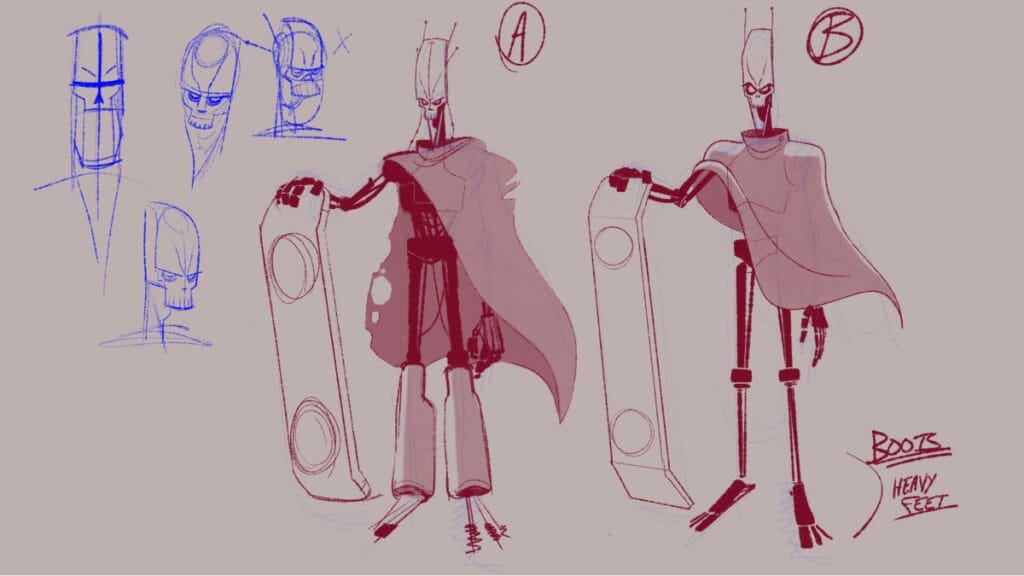
What was your path to your current role?
Shane: Way back when I was nine years old, I had a little program called the Disney Animation Studio and I remember learning how to do timing then. One thing led to another. I didn’t know what I wanted to do in college, but there was an animation program at Algonquin College, which led to my first job at Mercury Filmworks. I climbed my way up the ladder, and here we are now.
Mercury Filmworks is the only studio I’ve ever worked at. They must have seen something in my… it wasn’t a demo reel. I had a book filled with artwork. And they must have seen something they liked. They gave me a shot as an animator and like a cockroach, I never left.
Colin: I was actually working towards becoming a police officer, but I didn’t quite have everything I needed to do that. I kind of looked at animation at the last minute. Algonquin College at the time offered a course that basically was an on-ramp to their animation program. I liked drawing, but I didn’t know much more than that. So my whole animation journey was a last-minute decision, I just need to do something right away. Once I was actually in that environment, learning about how animation work, and what you’re actually doing, it became really apparent that I really enjoyed doing it. And I was pretty good at it.
Right out of school, there wasn’t any work. I think I was unemployed for about eight months, before things started to really pick up. I got my first job at a different studio, doing some very simple input work. And I was just tracing held cells of hand drawn elements for doors and cars in a show and digitizing them into a Flash environment. From there, I eventually got an animation job at Mercury Filmworks. And I’ve been here pretty much ever since. I left for a short little while but came back. This studio consistently had work.
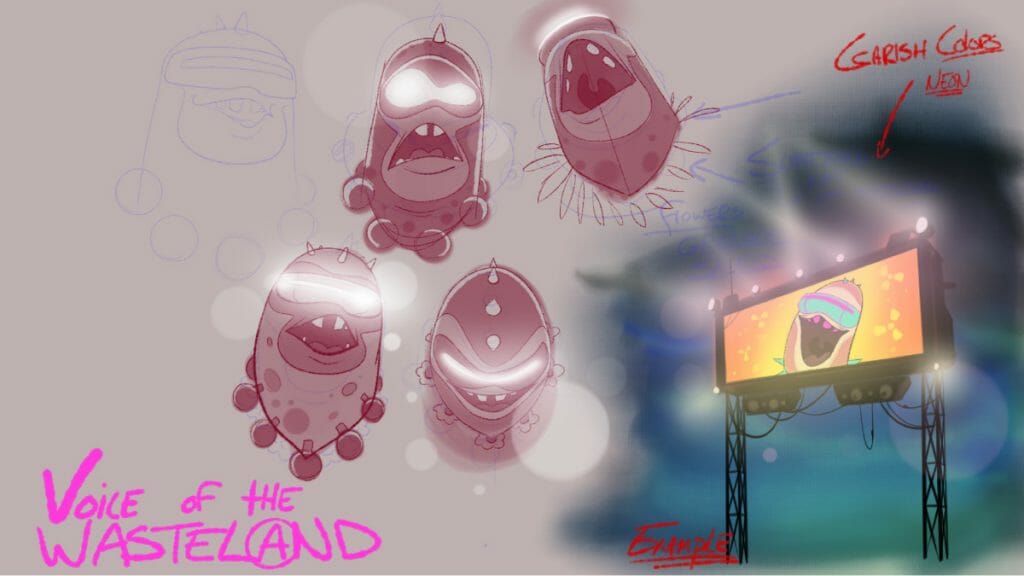
How would you describe Mercury Filmworks and the work that your studio specializes in?
Colin: We’re doing things that other studios don’t dare to do — or don’t even attempt to do. And that was always really interesting for me. We’re such a trusted studio, where people know that if they send us projects that we’re going to do the job right, and we’re going to excel at it.
I was involved with the short film, Hair Love. We were actually sent there. Jefferson came up to me on a Friday, like: “Hey, do you want to go to LA for two weeks? You leave on Sunday.” Essentially, that production was in a spot and they needed people who could produce quickly and at high quality. We essentially were airdropped from a helicopter right into the studio. We helped get the film done in those two weeks, because they had such a super-tight deadline.
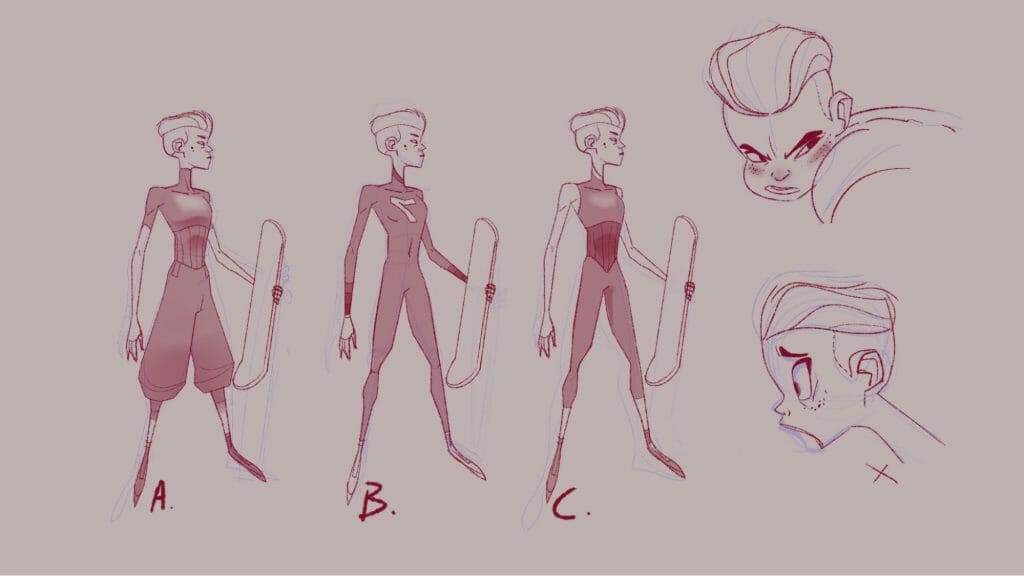
How would you describe the creative brief of this project and how much creative freedom did you have?
Colin: Over the past 10 years, I’ve learned that Mercury Filmworks is really my home. It’s the place I want to be, not just because of the projects but the people that I’ve worked with. I can see where the studio is going, and it’s a future I want to be part of. So I’m really excited to see what we do next. The Duke’s Game was kind of a glimpse into what we can do and if we have those opportunities.
This project was brought to us by Toon Boom Animation. When I first learned about it, the timeline turnaround for this project was very, very tight. It was a really interesting challenge, because we needed to create a short film in a very small amount of time. The only requirement was that this short needed to be about skateboarding in some form.
Shane: We had all the creative freedom in the world. But we didn’t know that when we started. The idea that we settled upon, I was unsure if Toon Boom was going to say yes. But my plan was to get enough artwork done so Jefferson Allen [VP of Operations at Mercury Filmworks] would let us do it. But as it turned out, everybody said yes. They loved the idea. And we were off to the races. It was unreal.
The stuff that I do on my own tends to be a little darker. Like we talked about with The Gate, last time you interviewed me. I wanted to try and go even darker to really isolate our main character. And the fact that she gets grabbed on the throat by the robot, I was thinking I was going a little too far. There are lines we don’t get to cross at the studio regularly, and I guess I was a little hesitant to pitch them.
Colin: Shane really kind of helped push the heat. He was the real creative force in creating the idea because we didn’t want to just do someone at a skate park. We had to be efficient and economical with our time, because if we were doing a bunch of shots, it would have been way too much work for us to actually complete in the time we had.
Our short is all one direction. There’s not a lot of action per se in terms of body mechanics; Everyone’s just going downhill. So we used that as a base to begin our story. We wanted it to be set in a wasteland. And because Shane has a huge love for Mad Max and that era of movies, it was just a natural fit.
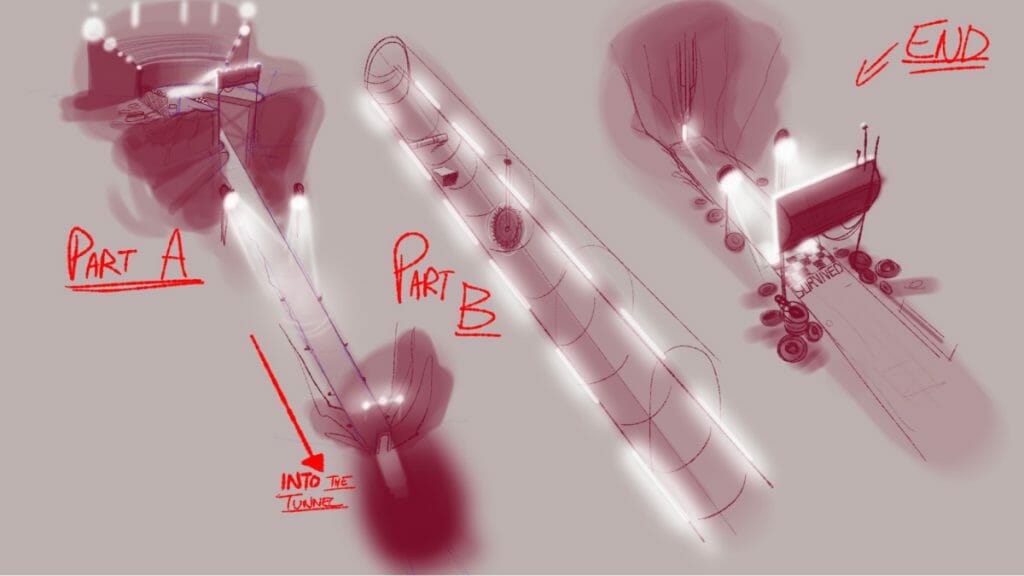
How would you describe the style and tone of the short and what was your main source of inspiration?
Shane: I never really thought about the style. It was just me on standby. I didn’t really have time to think about it. I just knew these characters were going to read really well on the backgrounds in the way I comp them, like on the top in the tunnel, since they have so much black on them. And I knew they were really going to stick out.
For tone… I’m more inspired by ‘70s cinema. It’s always backlit, and they really play with the lenses. I was trying to find avenues to do that in the short, but in the tunnel we were just trying to go actiony and light. And just as frantic as possible. We always knew the direction. We were going to start at the race.
But how are we going to do that? How are we going to make the Duke as imposing or nefarious as possible? I had an “I don’t know what I’m doing” kind of moment. I thought it would be easier to board this stuff out. This is where Colin really helped – I know he’ll say he really wasn’t a part of this thing, but that’s a lie. We came together and really figured out the action together.
Colin: The main inspiration for the short was the movie The Running Man. It was all about someone who was in a situation that they didn’t want to be in. Mouse was placed in a position that she didn’t want to be in; she had to win this race to save her life. We wanted it to be fun, and we didn’t necessarily want it to be scary, but we wanted it to have some sort of danger to it. And that’s where a lot of the shots come from; the spikes on the poles, the trick she has to do to get through the downhill maze. Those were all factors when we’re thinking of doing the short, and we wanted to show some impact as well.
That’s where the Nitro scenes kind of come in. Nitro originally had three or four attacks, but we toned it down to one. And then the big explosion at the end, that was really critical for us as well, because we just wanted to push how Nitro never lost a race. This is a huge defeat for him: literally exploding.
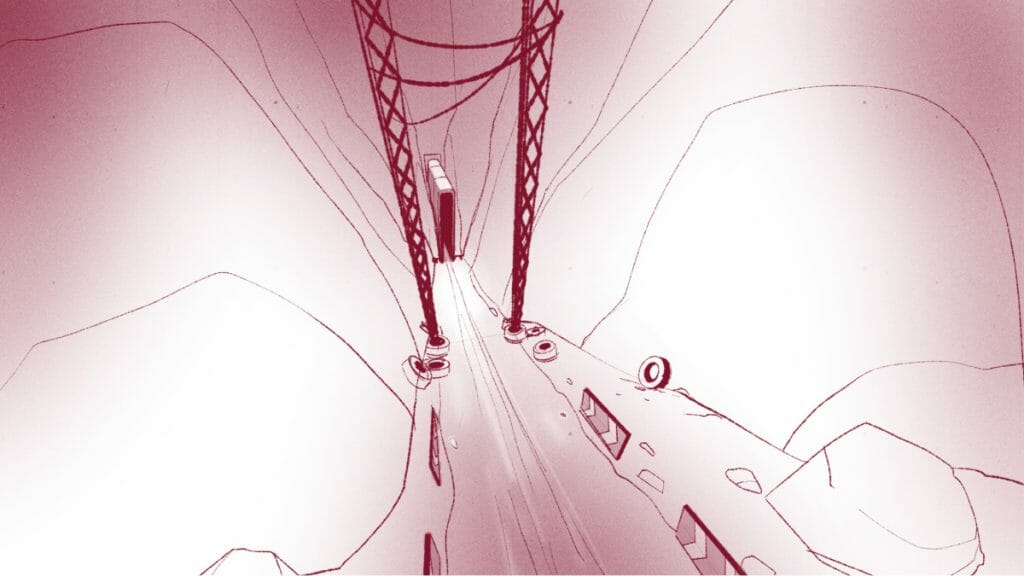
So Nitro wasn’t just physically devastated by the explosion. He was also emotionally devastated?
Colin: He’s never experienced a loss like this before. And he was actually never damaged before. This is all backstory that we thought of and is really important when creating a short film. So you can know, as directors: “Would this character actually react that way?”
How would you describe the three main characters in The Duke’s Game, both in terms of their physicality and personalities?
Shane: Mouse is the hero in this story, and she is racing for her freedom. And she’s racing against an impossible opponent who’s never been beat. Newsflash: she beats him. She starts at the bottom because she’s just the underdog, racing for her freedom. It’s kind of a Rocky story. Can I say ‘Rocky’?”
Colin: Mouse is kind of an unwilling participant in this game. That’s something we talked about: “Is she someone that is actually partaking in this game willingly? Or is this something that she’s forced to do? Originally, in early concepts of the story, we had her tied down to the platform and then eventually let go. But we found it just flowed better this way without those extra beats.
Shane: Going to Nitro, I love drawing villains. I only draw villains, ugly things, or stuff that’s hiding in the shadows, so Nitro came more naturally to me. I always knew what he was going to look like. And he’s just a real jerk out to show Mouse that the tunnels are his stomping ground, why he’s the champion, and why he never loses.
Colin: Nitro is an absolute beast of a skateboarder. It’s unclear how long he’s been the champion, but he’s never been defeated.
Shane: The Duke was kind of just me on overdrive. I’ve never done voice acting before, so I hope this works. As I voiced The Duke, I really saw him come together in my mind. As soon as we started giving scenes to the animators I knew exactly how I wanted him to look. And he kind of took on a persona for himself, bigger than just the character on the screen around the studio.
Colin: It’s never clear if The Duke is actually a real person or not. For us, he was always just some sort of hologram AI character. He gives us a little bit of a sense of the world as well; what’s happening, what the game is, and what’s at stake for the players.
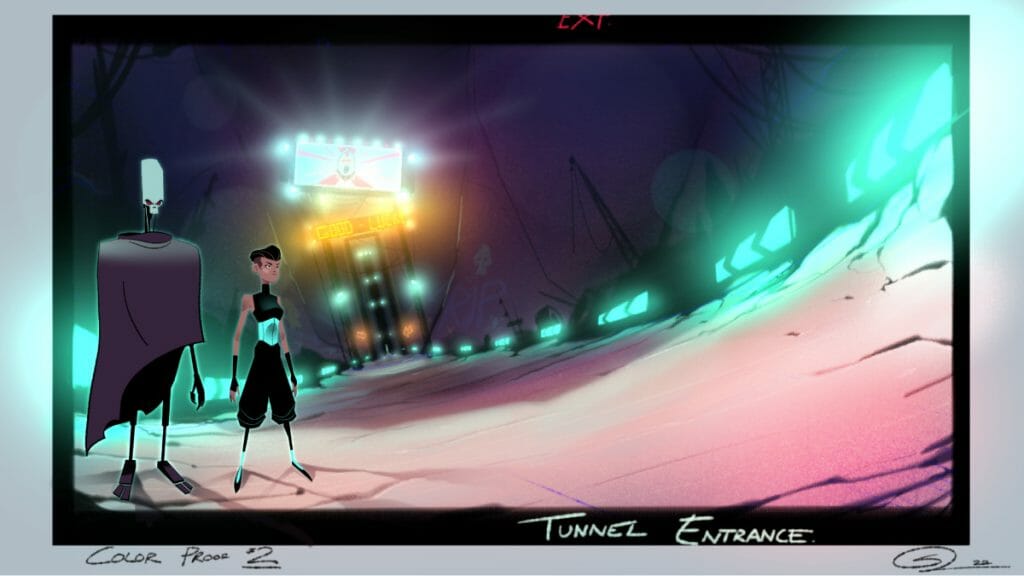
At one point Nitro loses an arm and screams. Was Nitro programmed to feel pain?
Shane: A lot of people were asking me around the studio, “why is he screaming?” The longer you spend drawing a character, at least for me, I start thinking about what they are, why they’re the way they are, and if there is any humanity left. I like to think that Nitro was a human before; he lost his life in the tunnel, but they kept him around because he was such a ripe villain.
Nice Simpsons reference, by the way.
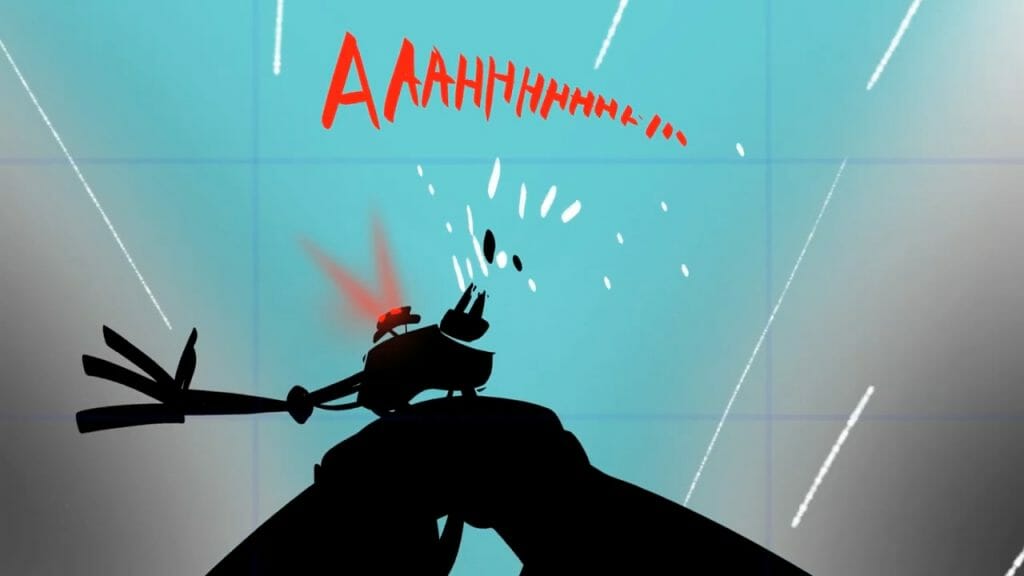
What storytelling beats did you change, refine or develop along the way?
Colin: We originally started with a single drawing that Shane created. It was essentially just a top down isometric view of the top of the wasteland, the tunnel, and the ending. From there, we started expanding and building our short. The things that came really easy were the beginning and end because we had a clear vision for that.
But the tunnel was a hidden mystery that we really didn’t have planned out. To be honest, it was something that was always pushed away because it’s easier to think of the things that you know are going to work. It got to the point where we had to stop and be like, “listen, we need to figure out what’s going on with this tunnel sequence. We need to know how many tricks we’re going to do. We need to know the story beats between Nitro and Mouse.
So we took a whole day to actually thumbnail out the whole sequence. We just started by writing down what we wanted to happen, and then once that was clear, we started thumbnailing out our story beats and seeing how they flow into each other. Right away we found things were taking too much time. We wanted that sweet spot, around a minute and 30 seconds. So we began cutting before we actually did any boards, all with a whiteboard. We were crossing things out, creating arrows saying this piece goes here, this goes here. It’s always hard to push something away that you liked so much. But for the most part, we’re just trying to be just trying to pick the true story beats and make sure it actually worked before we went any further.
Shane: The biggest character that changed along the way was The Duke. We knew roughly how he would say some lines, but me and Colin were having so much fun.
Like: “Oh God! What if he said this? It would be so much worse if he said this.”
He started coming together in the storyboards, and we kind of got a sense that he is the voice of that wasteland. So he has to be an 11 on the scale. He has to be over the moon, just super high energy. Like Killian from The Running Man. I watched that movie around a hundred times while I was working on this.
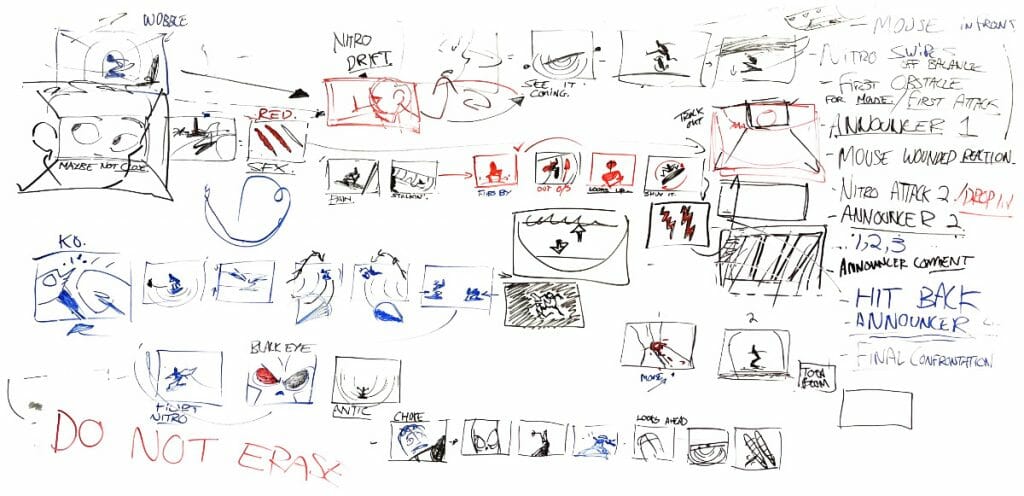
As someone who typically works on the production side, did this project give you more insight into the work that goes into the pre-production?
Shane: It really opened my eyes to why we do things a certain way here. I took on a lot, design-wise. In this project, I turned into a BG painter, special poser, etc. I got a chance to see the other side of the pipeline that I normally wouldn’t. And it’s a lot of work.
What was the process like behind the audio track?
Shane: I like to approach audio just like I like to approach animation. I’ll just make it as rough as possible. It’s kind of like clay, where you’re just building it up while getting rid of the stuff that doesn’t work. But when it came to the voices, which is something I’ve never done before, I didn’t have time to get stressed. I was just like, “Well, I told them I would do it, so here we go.” And then we jumped in the little soundproof booth we have downstairs. Throwing it all together on my iPad in GarageBand; it was awesome! That’s when I kind of knew we had the sonic signature for this.
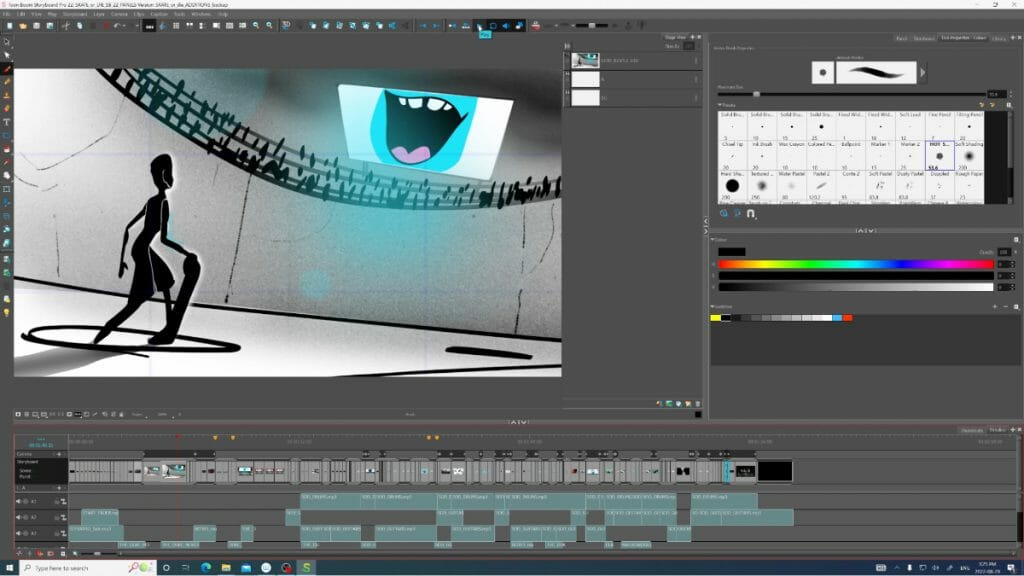
Where did the background track for the short come from?
Shane: On my own time, I would call myself a hobby musician. Every once in a while, my brother and I will write a song or two. The really challenging thing about that is, he’ll just make me write a riff out of nowhere, and it’s the exact same thing that started here. I knew that I needed to write something a little heavier with this project, and then I came up with one riff.
When we approached Toon Boom Animation with the idea, I was going to if I could take the music since we have such a specific vision anyway. I asked Stephanie Quinn if I could take a shot. And then it started with this riff. And that’s pretty much the heartbeat of the whole short.
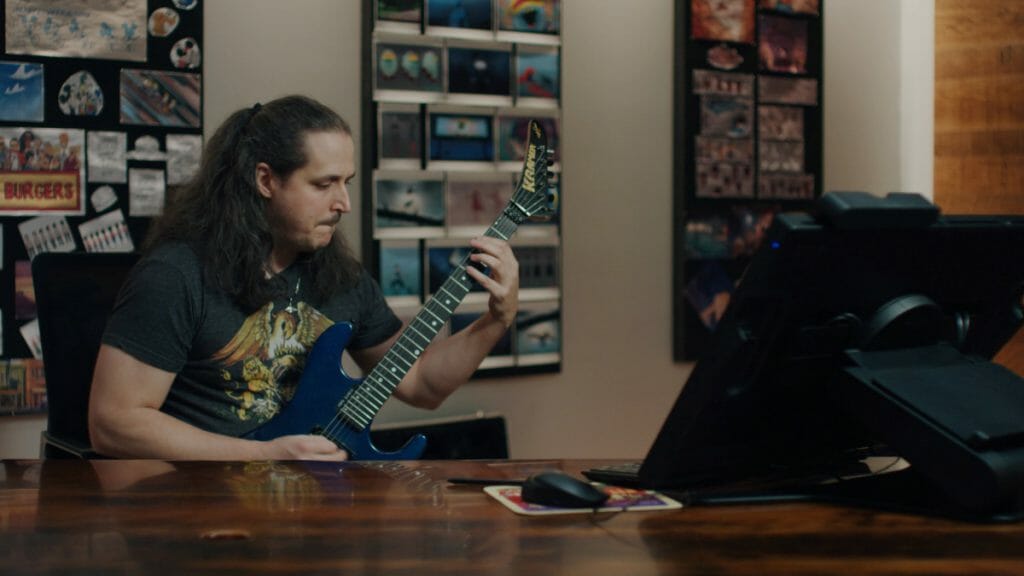
Can you tell us more about your collaboration with your brother?
Shane: I’m the guitar guy. I do the guitar and the bass and most of the sound engineering, but I can’t do drums. My brother is one of the best drummers I know. I sent this off to him kind of blind. He hasn’t seen any visuals from this, just the voices to work with. And he made a killer drum track.
Did you learn anything from the production? And was there anything new that you wanted to try?
Shane: There was a challenge that has always eluded me. And since we were shooting for the moon anyways, because this is a pretty ambitious short, I have never scored something before. I’ve never gotten to write music on top of something, and this was the biggest challenge for me. And it was way harder than I ever would have thought.
I had a very rough track at first, and I think people were being nice when they said, “it sounds awesome.” It didn’t. It sounded like garbage. But it was enough to keep the tempo. Once that was set in place, I knew exactly when the scenes were going to cut. I knew when this starts, and I knew when that stops. It was very simple.
Colin: This production was great for me, in the sense that I could try more things on the pre-production level, storyboarding and story flow. It’s something that was necessarily available to us because we are, for the most part, a service studio. We’re breaking out of that and we’re creating our own shows like Hilda, but for the most part, it’s somebody else coming to us with their idea.
For The Duke’s Game, we basically had a blank check to do whatever we wanted. We really took that to heart and did exactly what we wanted for the short. The energy that that alone created made me want to quit my current job and just work solely on The Duke’s Game. It was just so refreshing and so exciting to work on a project that had true creative freedom. That was a huge opportunity for everyone here and I’m so happy we had a chance to be part of it.
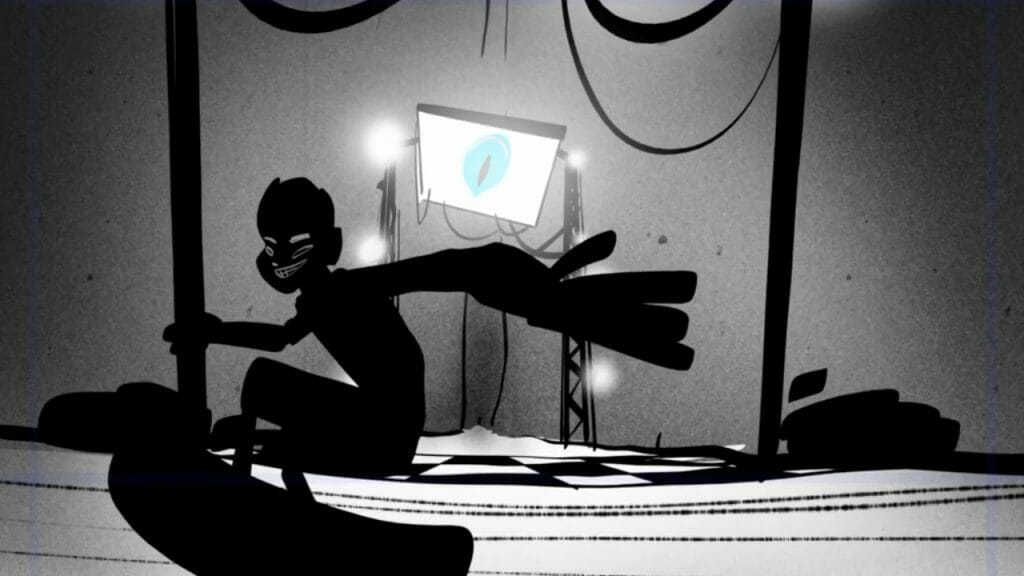
How did you direct the animators to work with the music track?
Shane: We had to make sure that the boards were rock solid before they got there. Some of the drawings were a little questionable, but there was enough there that it was the plan of attack; don’t deviate from the sound, and hit the accents right when the cymbal hits, because that was the mark when the scene changes and nobody can mess with it.
And it was like I said before: I got spoiled. I didn’t have to do many revisions at all.
- Curious about the animation, rigging and compositing process behind this short? Be sure to read Part Two of our interview with Robert Buchanan, builds and rigging supervisor at Mercury Filmworks.
- Want to see more behind-the-scenes videos from The Duke’s Game? Subscribe to Toon Boom Animation’s YouTube channel.
- Ready to carve through your next storyboard or animatic? See what’s new in Storyboard Pro 22.
The post Making of The Duke’s Game / Part 1: Preproduction appeared first on Toon Boom Animation.
Courtesy: https://www.toonboom.com/making-of-the-dukes-game-part-1-preproduction






